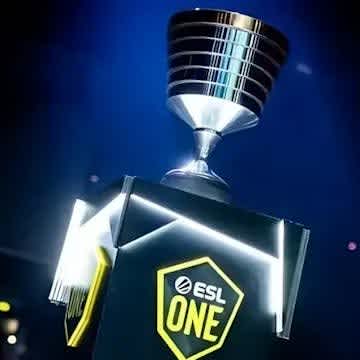Valve announces complete revamp of competitive Dota 2, regional leagues
The developers of Dota 2 have just announced a restructuring of the competitive scene starting after TI10, with three seasons and six regional leagues serving as the new set of preliminary events leading up to a Major featuring the best and brightest of the world. The aim of the changes is to further support the lower tiers of Dota competition, a long-standing issue in the esport. Here is everything you need to know about this new competitive system.
Dota 2 Regional Leagues format
Each of the six regional leagues (maintaining the existing regions of SA, NA, EU, CIS, China and SEA), will play three seasons during the circuit and will have a prize pool of 280k dollars per season. Each of these leagues will consist of an Upper and a Lower division, each with eight teams in total. Now, a total of 96 teams worldwide will have access to a regular source of prize money from Valve across the calendar. Every Upper Division match will be presented from studio broadcasts while the Lower Division matches will be featured on DotaTV.
Per the official blogpost, “For the inaugural season, Valve will allocate the initial teams to the Upper and Lower divisions. Teams will also have to declare the region they choose to participate in (and be eligible for that region) before the season starts. Remaining slots will be filled through qualifiers after The International 2020 concludes.” Three or more players need to reside in a given region for a team to be eligible to compete there.
The top two teams from the Lower Division at the end of every season will be promoted to replace the last two teams from the Upper Division. The bottom two teams in the Lower Division will be replaced by teams from open qualifiers.
Dota 2 Regional Leagues schedule
Each league season will last six weeks, featuring a full best-of-three round robin bracket among all teams. Each region will have three competition days a week, with the following set timeslots:
Upper Division
Tuesday: China / Europe / NA
Wednesday: SEA / Europe / SA
Thursday: SEA / CIS / NA
Friday: China / CIS / SA
Saturday: SEA / Europe / China
Sunday: China / CIS / NA
Lower Division
Monday: China / SEA / CIS / Europe / NA / SA
Tuesday: SEA / CIS / SA
Wednesday: China / CIS / NA / Europe
Thursday: China / Europe / SA
Friday: SEA / Europe / NA
Saturday: CIS / NA / China / SA
Sunday: Europe / SEA / NA
Dota 2 Regional Leagues prize pool
All teams participating in the leagues will receive financial compensation, as well as DPC points and quotas to the Major.
Upper Division prize pool:
- $ 30,000 + Major Playoffs seed
- $ 28,000 + Major Group Stage seed
- $ 27,000 + Major Wildcard seed*
- $ 26,000 “ Major Wildcard seed*
- $ 25,000
- $ 24,000
- $ 23,000
- $ 22,000
Lower Division prize pool:
- $ 17,000
- $ 16,000
- $ 15,000
- $ 11,000
- $ 9,000
- $ 7,000
*only EU, CN, SEA and NA teams will advance to the Wildcard stage by finishing 3rd and only EU and CN teams will do so when finishing 4th due to the regional allocation of Major slots
Dota 2 new Majors
The Majors will have a system similar to the current ones, with a new Wildcard phase where teams from China, SEA and Europe will compete for the last two places to the group stage. The Wildcard phase features six teams and a best-of-two round robin format. The top two advance to the Group Stage, completing the eight-team bracket for another set of best-of-two round robin. The top two teams advance to the Playoffs upper bracket while 3rd-to-6th teams advance to the lower bracket.
As always, the leagues and Majors will award DPC points, which will determine the twelve direct invites to The International. The remaining spots will be decided through six regional final chance qualifiers, featuring the eight best teams from each region that haven’t been invited to TI. Notably, there won’t be open qualifiers to TI under this system.
Dota 2 new season dates
The key dates of the upcoming season are as follows:
S1 Fall League: Oct 5th – Nov 15th
S1 Major: Dec 7th – Dec 19th
S2 Winter League: Jan 4th – Feb 14th
S2 Major: Mar 8th – Mar 20th
S3 Spring League: Apr 12th – May 23rd
S3 Major: June 21st – July 3rd





